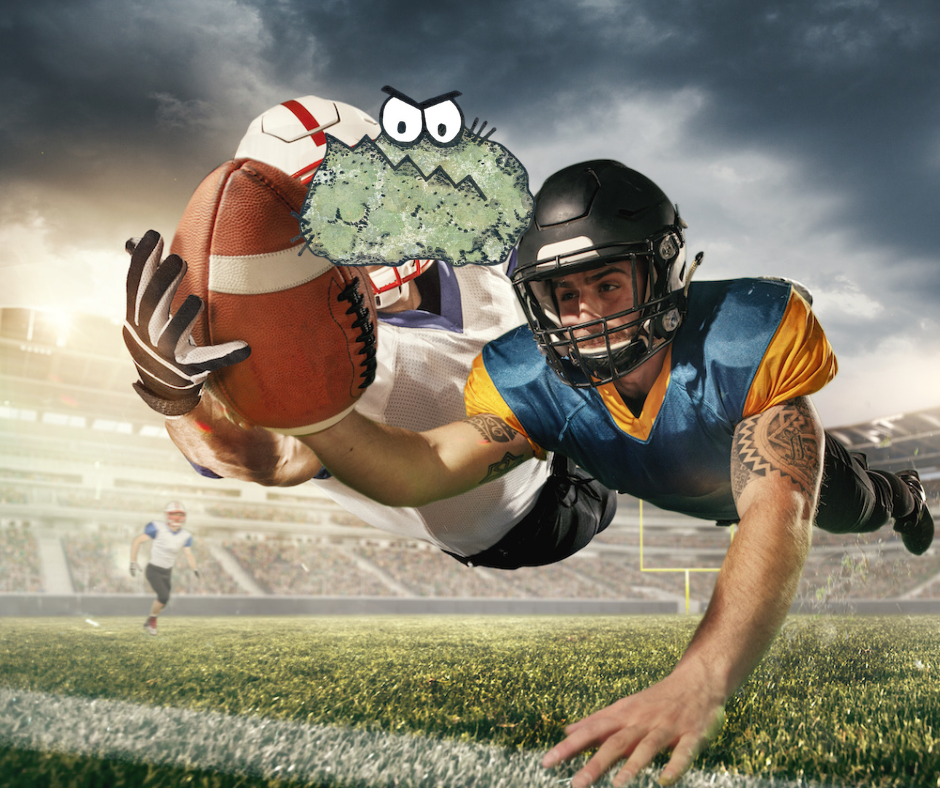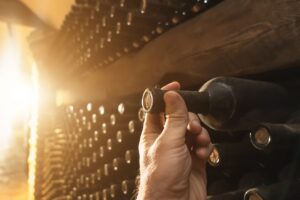It’s the top of the first quarter and your team’s running game is superior to the opponent, however, the opponent has a secret weapon – excessive moisture!
Failing to solidify a strong offensive front could lead to an open invitation from unwanted guests: at the top of that list is mold.
Essentially, a moist and poorly ventilated home represents the perfect habitat for this fungus to flourish. In an effort to avoid a Hail Mary, here are four downs on how to prevent excess moisture in your home this football season.
1st Down — Storage
Most of us rely on our basements and attics as storage spaces for our belongings. Unfortunately, if we don’t use the proper containers for our belongings, they can quickly absorb excess moisture and become the ideal breeding ground for mold.
Another thing to keep in mind is that mold tends to form on clothes, books, paper documents, and carpets. If you leave these items on the ground or propped against a wall, moisture will accumulate in those areas.
To avoid this happening, we recommend using airtight containers instead of cardboard boxes, as mold doesn’t feed on plastic. Additionally, placing shelves within the room can also help create an area that’s less conducive to moisture.
2nd Down — Conduct Regular Moisture Checks
If you want to maintain a mold-free home, you will need to perform regular moisture checks. In our experience, it’s best to do so once a month in order to identify and address potential problem areas before they turn into full-blown mold infestations.
In severe cases, you may feel as if the air in your home feels heavy or soggy. But, if this isn’t the case, here’s what you need to do. Start by performing a thorough visual inspection of your home. Check for signs of discoloration, water stains, or peeling paint on your walls, ceilings, and floors. Next, look for any visible gaps or cracks in the foundation that may allow water to seep in.
Another, more obvious sign of excess moisture is condensation on your windows and doors. This occurs when warm, moist air comes into contact with a cold surface and suggests that the indoor humidity levels are too high.
Once you determine that there is indeed excess moisture in certain areas of your home, you’ll be able to address the issue before it gets out of hand.
3rd Down — Improve the Ventilation in Your Home
Mold typically grows on organic materials like wood, drywall, and even insulation. With that in mind, the best way to keep moisture off of these surfaces is to improve the ventilation in your home. This means ensuring that all the vents lead to the outdoors, allowing fresh air to circulate.
Additionally, creating the proper airflow will prevent the stagnant air from becoming a reservoir for humidity.
4th Down — Check for Leaks
Finally, it’s time to check your home for any hidden leaks. Start by inspecting the faucets and pipes in your kitchen, bathroom, and laundry room, as these areas are especially susceptible to mold. All leaks should be repaired immediately to prevent mold from forming.
Furthermore, remember to check your basement for signs of seepage or water pooling. Underground areas should have proper drainage systems in place, so if you notice any excess water, you may need to install a pump. It’s also a good idea to run a dehumidifier in your basement to keep humidity levels low.
When in Need, Give Us a Call
If all else fails and you have to punt, contact Mold Solutions. We’d be happy to assess your home and give you an estimate. There’s nothing we enjoy more than helping homeowners fix their mold problem. So, don’t wait; give us a call today!








